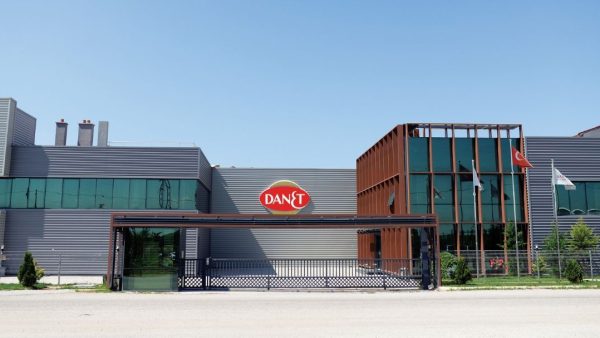- Our SolutionsCloud SolutionsNetwork SolutionsBusiness SolutionsVirtualization SolutionsCyber Security SolutionsData Center SolutionsCloud Solutions
Adobe Creative Cloud
A comprehensive set to boost your organisation’s creative potential, facilitate professional content production and improve collaboration.Cloud Management
While offering the most suitable service provider for your business, we ensure the efficiency of your business continuity with data centre management services.Microsoft 365
We optimize business efficiency and collaboration with Microsoft 365’s cloud-based integrated applications and services.Microsoft Azure
We are with you in Azure infrastructure and service management, secure migration, cost optimisation and Azure migration processes.CloudFlex
We manage your technological transformation and increase your competitiveness with customized solutions and services for your needs.HPE GreenLake
Modernize your multi-generational IT with a fully managed cloud experience for hardware, containers and VMs in your private environment.Network SolutionsNetwork Security Solutions
Network security protects data exchange for organizations by overseeing complex network architectures and threats, guaranteeing business continuity and compliance with the right design and management.Wired Network Solutions
Choosing compliant wired network options for your business, along with the right selection of active devices and components, ensures a stable work environment and long-term use.Wi-Fi 6E Solutions
Wi-Fi 6E optimizes organizational network performance with next-generation wireless technologies, and Aeris provides you with the most suitable solutions in this regard.Business SolutionsIndustry 4.0 Solutions
We support our customers in optimizing their processes and making smarter and more efficient decisions with Industry 4.0 technologies.Industrial IoT Solutions
We provide efficiency-boosting and competitive advantages to manufacturing and logistics businesses with Industrial IoT (IIoT) solutions.ISO 27001 Solutions
We offer comprehensive solutions for ensuring information security compliant with ISO 27001 standards and provide a secure working environment.Field Security Solutions
We offer solutions that meet your business’s occupational safety needs, easing your obligations related to employees, legal matters, and financial responsibilities with our experienced team.GDPR Solutions
With our experienced consulting team, we establish the necessary systems for your business to process personal data in compliance with GDPR, reducing your legal obligations.Asset Tracking Solutions
We assist you in optimizing your asset tracking processes, using the latest technologies to reduce costs and bring your projects to life.VOC – IoT Air Quality System
We offer compact and portable solutions that measure and record air quality with Wi-Fi-enabled IoT sensors and management software.Virtualization SolutionsNetwork Virtualization
Enables network programming and management without the need for physical intervention, simplifying operations and increasing business efficiency.Desktop Virtualization
We provide modern work environments with secure access, flexibility, and business continuity advantages to users from anywhere using desktop virtualization technology.Server Virtualization
We keep your organization up to date with the latest developments in server virtualization technologies with our experienced expert team.Application Virtualization
Simplify management and provide a flexible working environment for large-scale enterprises by facilitating access to applications without installation.Data Center Virtualization
With our end-to-end virtualization services for data center transformation, we enable organizations to quickly and easily deploy their IT resources.Cyber Security SolutionsCCTV Solutions
We determine security solutions specific to the organization through field discovery, install appropriate technologies, provide user training, and offer maintenance services with rapid support.Enterprise Data Security
We ensure corporate data security with strong security policies and advanced technologies, protecting both your business data and digital reputation.Penetration Testing
We increase the security of your business against cyber threats with penetration tests, providing a competitive advantage by enhancing customer trust.End User Security
With Trend Micro, we provide comprehensive endpoint protection with the latest technologies to protect corporate data on all devices and applications, offering a secure working environment.Data Center SolutionsHyper-Integrated Data Center Solutions
We combine your software and hardware in a single data center to reduce costs, streamline business processes, and offer a perspective suitable for the world of IT.Business Continuity Solutions
Our expert team provides customized business continuity solutions for your organization, reducing operational risks, increasing customer confidence, and protecting your reputation to gain a competitive advantage.Server Solutions
With our server solutions, we offer uninterrupted operation with cost savings, optimized performance, business continuity, enhanced performance, ease of integration with virtualization, and spare part continuity.Data Storage Solutions
We merge professional data storage and backup solutions with leading manufacturers, ensuring that this data is brought together in a secure and manageable environment.Backup Solutions
With our expert team, we back up the data of your critical business applications to global standards with top-level security, ensuring that it is always accessible. - Our Services
Corporate IT Support
We provide fast, comprehensive and cost-effective solutions for your IT needs.GDPR Consultancy
We help you process your customers' personal data in compliance with regulations. - Contents
- Our Business Partners
- About Us
- Contact Us
İstanbul
Head OfficeTekirdağ
Çorlu BranchNetherlands
Aeris Technology B.V.- Kingsfordweg 151, 1043GR Amsterdam Holland
Dubai
DSI Digital Solutions & Innovations- Arjaan Office Tower, 8th Floor, 801, Media City Dubai
Slovenia
Aeris Technology D.o.o- Celovška Cesta 172, 1000 Ljubljana, Slovenia
Network Virtualization
Network virtualization is the capability to create logical and virtual networks independently of the underlying network hardware. This technology enables better integration and support of the network with increasing virtual environments. By virtualizing network components, virtual networks provide the same functionality as physical networks, allowing you to create more virtual networks with less hardware.
Special Offers for Your Project and Company
Our expert team is always ready to help.
Network virtualization can be achieved through methods that combine multiple networks or network segments using external virtualization or software containers running on a network server. On the other hand, internal virtualization is a method that provides network-like functionality within a single network server. In software testing and software development processes, network virtualization is used to simulate where software will run in network environments.
It also allows applications, services, dependencies, and connections between end-users to be tested in a simulated environment. This enables accurate evaluation of the software in the correct environment without the need for physical testing in all hardware or system software. The validity of the test depends on the accuracy of network virtualization in mimicking real hardware and operating systems.
What Aeris Offers with Network Virtualization
Aeris enables you to focus on technology by solving network-building problems in data centers. It helps you programmatically centralize and manage the network as desired without the need for physical infrastructure intervention. This approach allows organizations to easily deliver, scale, and adjust workloads and resources to meet evolving information technology needs. Aeris’ solutions simplify data center operations, increase efficiency, and provide a competitive advantage for your organization.
Advantages of Network Virtualization
Data center virtualization reduces hardware and energy costs, providing cost savings to businesses. Additionally, it minimizes the risk of data loss, ensuring easy data recovery, and optimizes resources in the data center by reducing the need for physical equipment.
Data center scaling provides benefits in areas such as reporting, optimization, load balancing, and flexibility, allowing system resources to be used more efficiently while preventing unnecessary resource utilization.
It provides ease of management by allowing multiple servers and components to be managed and monitored from a single point. This minimizes workforce loss.
Data center virtualization consolidates, demonstrates an environmentally friendly approach, and plays an important role in business continuity.
The ability to provide services with less physical equipment yields significant gains in climate control and energy savings. With these advantages, it offers businesses cost savings, efficiency, flexibility, and an eco-friendly data center solution.
External Network Virtualization
External network virtualization is a method for improving the efficiency of large-scale networks or data centers by merging local area networks (LANs) into virtual networks or dividing them into subnets. Virtual Local Area Network (VLAN) and network switches are the fundamental components of this technology. A system administrator can configure the same systems connected to the same physical network into different virtual networks. On the other hand, an administrator can extend the scope of a large network by combining systems from different local area networks (LANs) into a single VLAN segment. This allows network resources to be used more efficiently and simplifies network traffic management.


Internal Network Virtualization
Internal network virtualization configures software to simulate a single system’s physical network using components such as software containers or pseudo-interfaces. This technology can enhance the efficiency of a single system by separating applications into separate containers or pseudo-interfaces. For example, using software containers such as Xen hypervisor control programs or pseudo-interfaces like VNIC, you can isolate and optimize network traffic between applications on a single system.







